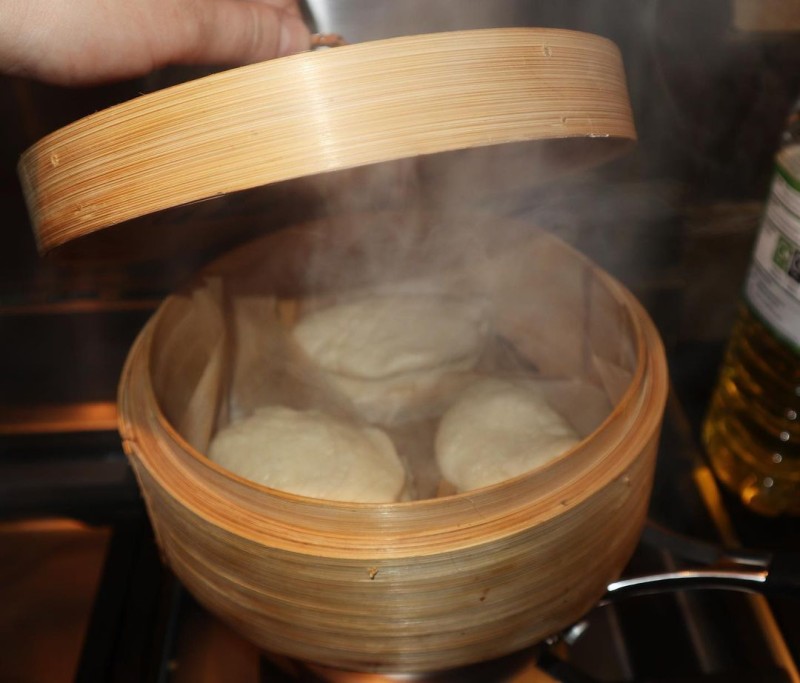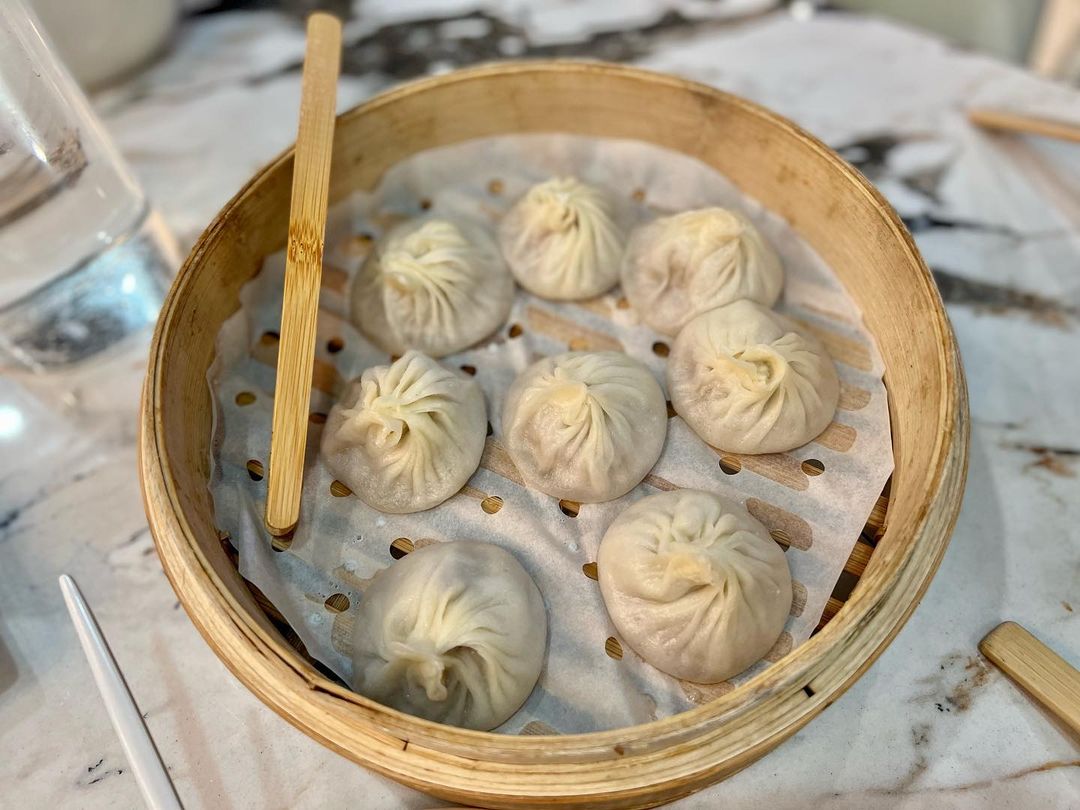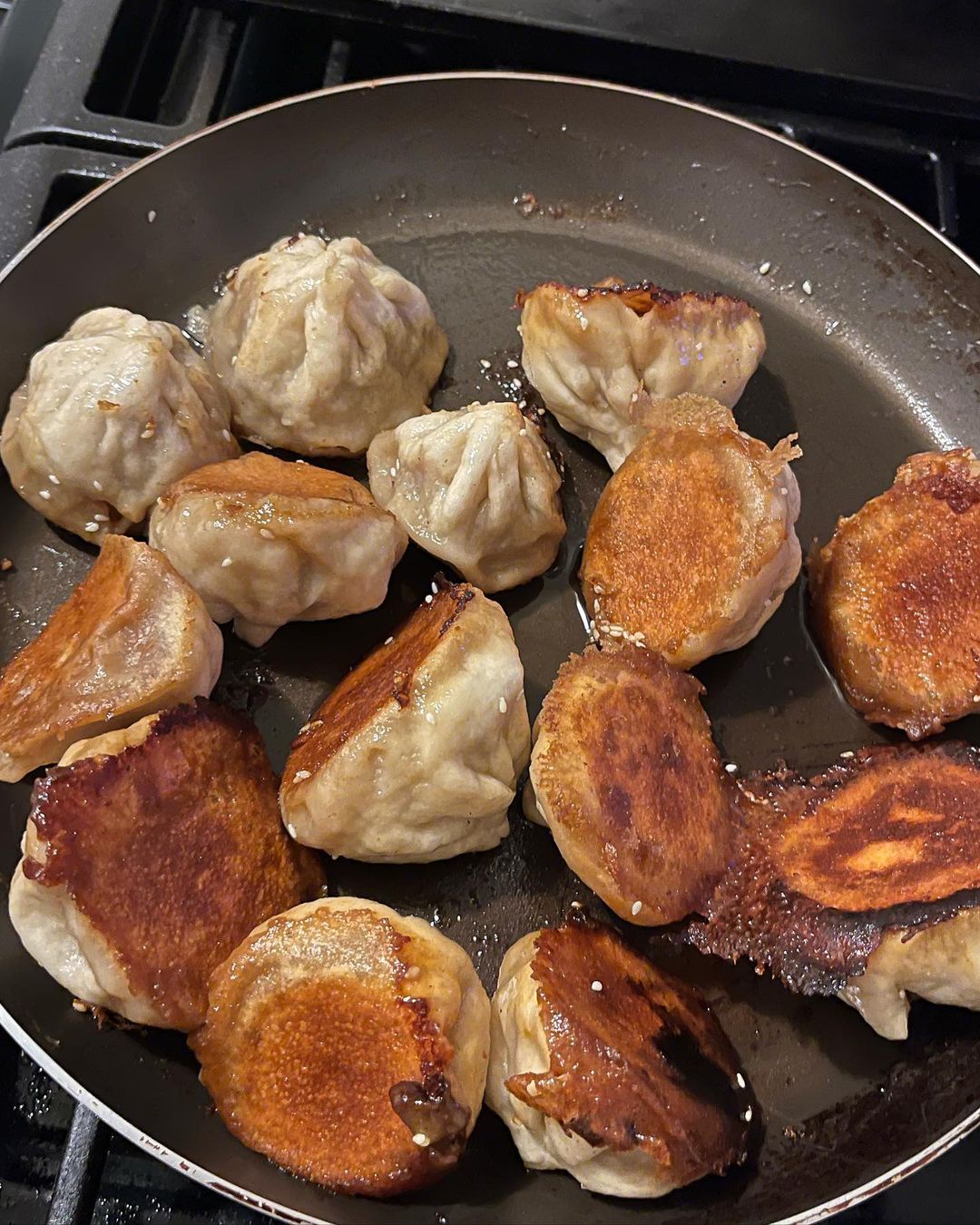Also popular as “pau,” or bao buns, these Malaysian steamed buns are a staple among every diner across Asia and worldwide. And truth be told, there is no surprise in why they are so loved: their airy texture, irresistible fillings, and freshness make them a versatile snack and an excellent ingredient for cooking applications.
Original to the Chinese cooking culture, pau was brought to Malaysia by Chinese immigrants. These were the contributors to what is called today’s “Nyonya” cooking style. Some people prefer eating steam buns as a snack, others as an accompaniment to the main meals. But no matter the eating habits, pau remains a statement due to the mouthwatering savory and the sweet, juicy fillings. The most beloved stuffings are curry, black sesame, and pandan coconut. However, let’s read more and understand how you can prepare these amazing buns at home.
How Do Natives Cook Steam Buns?

Pau is traditionally cooked using the famous bamboo steamer. This technique allows the moisture to diffuse into the bun, giving it that puffy texture. Any excess water will be absorbed by the bamboo weaving. Why? Well, because this unique bamboo cooking tool keeps away any possible condensation results.
However, not everyone has a bamboo steamer at their fingertips. This is especially true for people living in the Western part of the world.
Don’t worry, as there are plenty of inventive alternative methods you can use to obtain those perfect steamed buns without a special steamer. Furthermore, all these cooking methods are suited for cooking frozen bao too.
Types of Steam Buns
As mentioned earlier, these buns come with different types of fillings. However, when it comes to steamed buns mainly, they have meat fillings. Even so, there are vegan options available as well. So don’t worry about not finding the perfect fit for you and your diet.

Meat Bao
- Xiaolongbao – contains a juicy broth and different meat fillings.
- Shaobao – a bun filled with shrimp or chicken.
- Cha Siu Bao– a bun that has barbecue pork filling
- Bah-pau – it comes with pork filling
- Shengjian Mantou – these types of buns are fried instead of steamed and have a meat filling
Vegetarian Baos
- Nai Huang – a type of bun filled with a special sweet custard
- Kaya baozi – a bao that has coconut and egg jam filling. This tastes the sweetest of them all
- Doushabao – a bao bun with bean paste filling. This is more expensive than the others
- Tangbaozi – this type comes in bigger sizes than the average ones. An interesting fact about this particular bao is that you will need to sip broth through a straw before eating the whole bun.
- Lianrongbao – this one has a delicious lotus seed paste filling.
- Zhi ma bao – this one contains black sesame paste. Due to the roasted sesame seeds, the final flavor is a little bit nutty.
- Cai bao – a vegetarian bao filled with a variety of vegetables
How To Steam Buns Without A Steamer: 6 Effective Ways
Let’s say you have steam bun cravings but have no idea how you can cook these Asian foods without the proper traditional equipment. Therefore, let’s explore the best steamer-less methods to get some juicy, delicious steam buns.
1. The Microwave
A great technique to cook buns is in the microwave. This method is simple, fast, and affordable, as most of us already have a microwave oven in our kitchens. Here is what you need:
- A microwave (obviously)
- A bowl
- A plate
- Paper Towels
Steaming buns in the microwave – steps:
- First of all, take the paper towel and dampen it with water. Make sure you remove the excess.
- Take the bun, wrap it in paper town, and then place it on the microwave’s plate.
- Use a bowl and wet it inside with running water. Place over the wrapped-up bun on the plate.
- Microwave everything for 1 minute at a time at a medium temperature until they are ideally cooked.
Tip: It is essential to microwave the bun in short intervals; otherwise, if you keep the buns for too long, they will dry out and become hard as a rock.
2. The Sieve Cooking Method
Another simple way to replicate a professional steamer with little effort is by placing the buns into a typical colander or sieve. All you need to do then is suspend it over boiling water. If you build a tower from tea towels and plates, the steam will not escape anymore; consequently, the steam will start the cooking process. Here is what you need to complete this method:
- A colander or a sieve (preferably made of metal)
- A boiling pan (large enough for the sieve to stay in)
- A particular boiling pan lid top
Steaming Buns with a sieve – main steps:
- Take a boiling pan and fill it up with a few inches of water.
- Place the sieve in the pan, ensuring the water level won’t overflow at the lowest point of the sieve.
- Prepare some cooking paper, lettuce, or cabbage leaves to place the buns on them. This will prevent the buns from sticking.
- Place the loaded sieve into that boiling pan, then place the pan lid right on top of the sieve. Keep in mind this step before getting that airtight medium with layers of tea towels.
- Turn on the gas mark at the highest mark and let the buns cook for ten minutes. Ensure you maintain the high intense heat to obtain hot steam for the cooking process.
3. Rice Cooker Method
This method will work if using the water-to-rice ratio. As soon as the cooking starts, the water will convert into steam. The steam is what cooks the rice too. Here is how the rice cooker method works and what you will need to do:
- Add one and a half cups of water to the rice cooker machine.
- Place the buns into the rice cooker.
- Leave the bao steam for somewhere around 8 minutes.
- After you check these steps, stew the heat, then let the steam buns sit as long as they need to be cooked.
- Last but not least, release the pressure and enjoy eating the buns.
4. The Oven Way
The oven method is one of the most accessible ones, and you will need only:
- Perforated pan
- A couple of hotel pans
- Parchment paper
Follow these steps:
- First, cut the parchment paper into small squares that suit the bao buns’ shapes.
- Add a small quantity of water into the bottom pan (this will allow the steam to create).
- Place the perforated pan above the water.
- Place every bao bun on each square piece of parchment, then place them on the perforated pan insert.
- Cover the buns with another hotel pan.
- Lastly, close the oven and set the heat for around 10 minutes.
5. The Pan Method
Another easy way to prepare bao buns is by using a pan.
Be careful! Considering a pan can retain a lot of condensation, it might drip down and make the bao bun mushy.
To avoid this situation, follow these steps:
- Fill the pan with a small amount of water until it reaches a few inches.
- Place a sieve into the pan, ensuring it is submerged in the water.
- Put the bao buns on the oven parchment paper, then place them in the sieve.
- Cover everything with the lid. Tea towels are great and can be used to make the environment all airtight.
- Turn the stove to the highest heat and let it rest for about 10 minutes.

6. The Wok Method
If you don’t have any of these tools at your fingertips, try the effortless wok technique. Tools you’ll need:
- One bowl
- One plate
- One wok
For those who don’t have a steamer, the wok solution will still allow you to get some fluffy steamed bao buns. Follow these simple steps:
- Add a small amount of water to the wok, then put the tiny bowl onto the wok.
- Take a plate and add greaseproof paper right on top of the bowl.
- Allow the water to boil.
- Place the buns on the greaseproof surface.
- Use a tall lid to cover the wok.
Last Thoughts
Do not give up your favorite snack if you don’t have a professional steamer. As you’ve read, these alternative methods I have previously mentioned will only take a few minutes.
Of course, the traditional bamboo basket will help you obtain the fluffiest steam buns without condensations. However, these alternatives listed are comparable to the traditional ones. So there is no need not to try them out.
